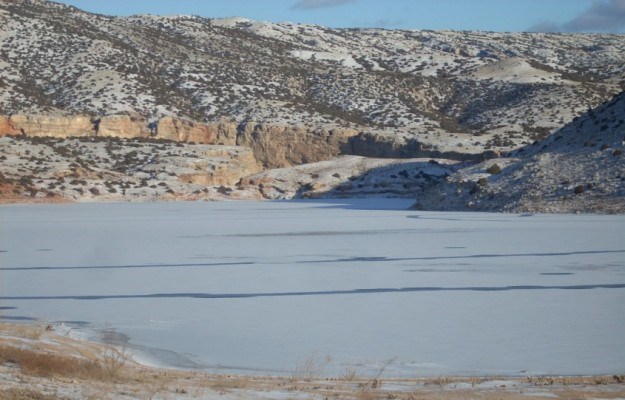
Friends of Bighorn Lake “Hanging on with fingers and toes” Not long after setting out the men were dwarfed by the canyon at a “height of 500 feet, with vertical walls.” Near the Montana/Wyoming state line they encountered a Chicago, Burlington and Quincy Railroad crew running a survey to ascertain the possibility of a rail line through the canyon. Gillette marveled at the sight of surveyors working their way around “almost vertical cliffs, hanging on with fingers and toes.” This was in an area where the rocky slopes were up to 45 degrees in grade. Gold in paying quantities On the 9th, two days into the trip, Gillette sighted a “knife-edge” formation at the mouth of Deadman Creek. This “pinnacle on the point towering 700 feet above the river” was named the Tower. A day later, Sharpe found paying quantities of gold at the mouth of Templeton Creek. That night the men camped on a shelf of rock. As they stared upward they noticed a strange phenomenon, the wind was whipping snow wildly on the rim of the canyon, while their camp was dead calm. Homborg Whirlpool From here to the mouth of the canyon, there were many rapids. Warm springs had melted the ice, forcing Gillette and Sharpe to make the rest of the trip along the river bank. Following one last night in the canyon the men reached the valley of the Bighorn. They camped just opposite the ruins of Fort C.F. Smith. They then turned around and made the return trip via Bad Pass Trail, following rock cairns that were left to mark the path over the previous centuries. (Sources: Bighorn Canyon Historic Resource Study, Edwin Bearss; “The First Trip Through Big Horn Canyon” Magazine of the American Society of Civil Engineers, E. Gillette.) |
Last updated: February 24, 2015
